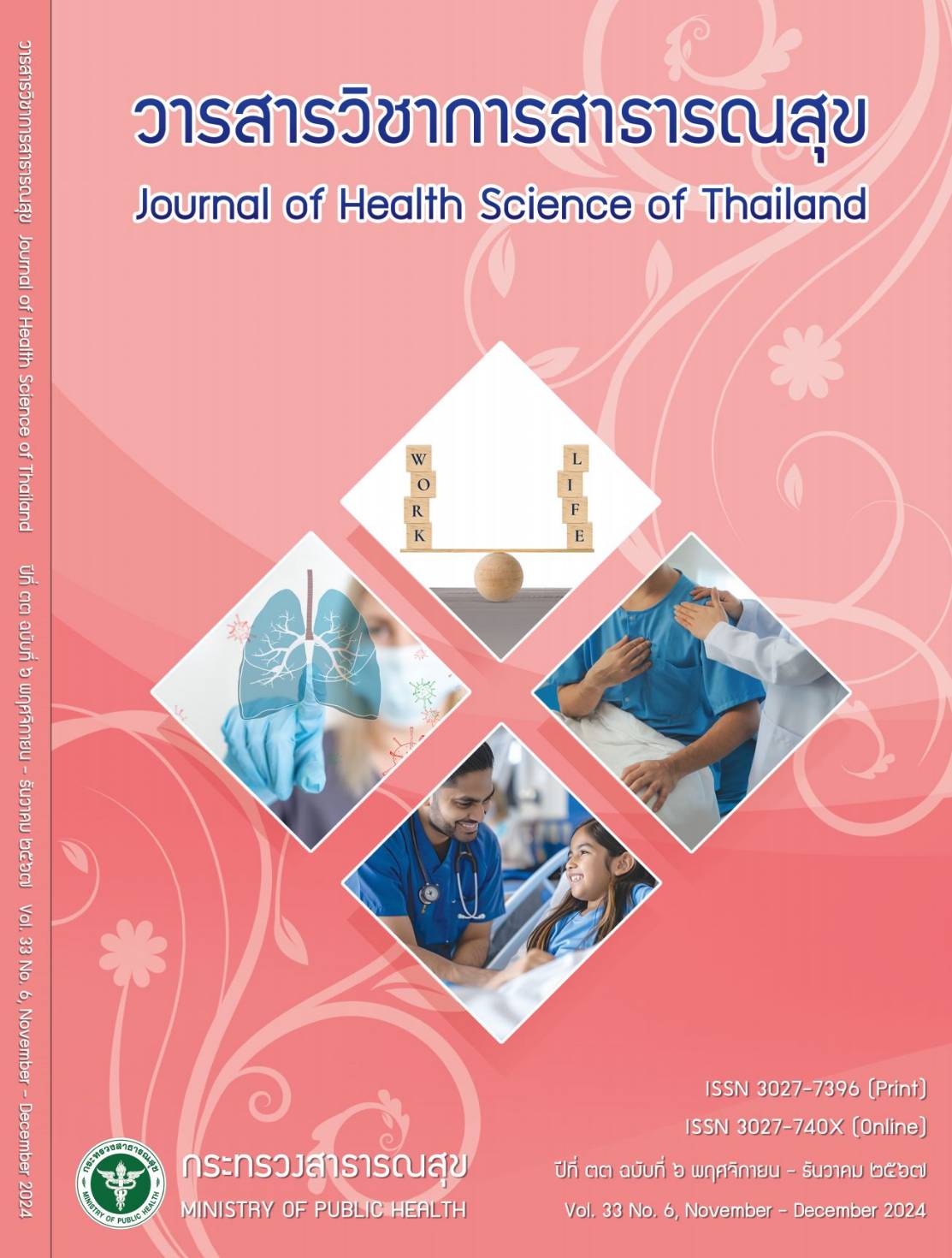Development of a Model to Reduce Injuries and Death from Road Accidents among Motorcyclists through the District-Level Road Safety Operation Center in Nakhon Ratchasima Province
Keywords:
road accidents, motorcycles, road safety operation centerAbstract
This action research aimed to develop a model for reducing motorcycle accident injuries and
fatalities through district-level road safety operation centers in Nakhon Ratchasima Province. The study
population was purposively selected, comprising three groups: (1) 8 core leaders from the
Provincial Road Safety Directing Center Committee, (2) 27 leaders from road safety operation centers in 9
highest-risk districts, and (3) 180 district-level operational leaders. The study was conducted from
November 2023 to August 2024. Research instruments included assessment forms, helmet usage data
collection forms, interview forms, and road accident injury and fatality recording forms. Data were
analyzed using descriptive statistics including frequency and percentage; and inferential statistics through
Z-test for proportion comparison to assess change in helmet usage rate, while qualitative data were
analyzed through content analysis. The findings revealed that motorcycle fatalities accounted for 44-50%
of all road fatalities. The implementation of motorcycle accident prevention measures was not
comprehensive across all high-risk districts, lacking outcome-focused problem management and systematic
problem-solving knowledge. A model was developed collaboratively with provincial and district stakeholders
through planning, implementation, observation, and reflection. Post-implementation results
showed improvements in all self-assessment scores of district road safety operation centers, helmet usage
rates significantly from 79.55% to 95.86% (p<0.05); and a reduction in fatalities was recorded in 4
districts, despite an upward trend in injuries. The developed model comprises 5 main steps: (1) situation
analysis and goal setting, (2) planning and measure design, (3) implementation, (4) learning and
development, and (5) expansion and enhancement. In conclusion, the developed model effectively
reduced fatalities, increased helmet usage rates, and could be applied in other high-risk areas.
Downloads
Downloads
Published
How to Cite
Issue
Section
License
Copyright (c) 2024 Ministry of Public Health

This work is licensed under a Creative Commons Attribution-NonCommercial-NoDerivatives 4.0 International License.







